Diamond Traxx
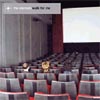 Benjamin Diamond, the strangely overlooked vocalist behind the smashStardust hit "Music Sounds Better With You," has quietly been releasingsome excellent French house singles on his Diamond Traxx imprint.Having enjoyed his solo releases, I was pleased to discover this 12" ofelectro-disco from The Eternals, a group who previously recorded forDaft Punk robot Guy-Manuel's Crydamoure label. "Walk For Me" is a deep,groovy track of warm squelchy bass pads and retro drum hits. Aneffected vocal sample echoes the title of the song repeatedly,sometimes seeming to be a command, other times more of a request orplea. It becomes all too easy to get entranced and lost here. "TheAndromeda Gate" the B side picks the tempo up considerably withcomputer voices spouting statements and status reports over oddarpeggios, haunted synth lines, and a funktastic house beat. During thebreak, the machine seems to take control, but it cannot hold back thebeat for much longer. It's a bit kitschy, but there's definitely anaudience for it. Electroclash fans should keep in mind that beforeAmericans embraced the sound popularized by Fischerspooner and MissKittin (and renamed it for their own purposes), French groups like LesRythmes Digitales and Superfunk were already writing electro-tingedunderground club classics that bubbled over to the mainstream.Therefore, The Eternals aren't trying to jump on our bandwagon. Infact, they're astro pioneers in their own right.
Benjamin Diamond, the strangely overlooked vocalist behind the smashStardust hit "Music Sounds Better With You," has quietly been releasingsome excellent French house singles on his Diamond Traxx imprint.Having enjoyed his solo releases, I was pleased to discover this 12" ofelectro-disco from The Eternals, a group who previously recorded forDaft Punk robot Guy-Manuel's Crydamoure label. "Walk For Me" is a deep,groovy track of warm squelchy bass pads and retro drum hits. Aneffected vocal sample echoes the title of the song repeatedly,sometimes seeming to be a command, other times more of a request orplea. It becomes all too easy to get entranced and lost here. "TheAndromeda Gate" the B side picks the tempo up considerably withcomputer voices spouting statements and status reports over oddarpeggios, haunted synth lines, and a funktastic house beat. During thebreak, the machine seems to take control, but it cannot hold back thebeat for much longer. It's a bit kitschy, but there's definitely anaudience for it. Electroclash fans should keep in mind that beforeAmericans embraced the sound popularized by Fischerspooner and MissKittin (and renamed it for their own purposes), French groups like LesRythmes Digitales and Superfunk were already writing electro-tingedunderground club classics that bubbled over to the mainstream.Therefore, The Eternals aren't trying to jump on our bandwagon. Infact, they're astro pioneers in their own right.
 Benjamin Diamond, the strangely overlooked vocalist behind the smashStardust hit "Music Sounds Better With You," has quietly been releasingsome excellent French house singles on his Diamond Traxx imprint.Having enjoyed his solo releases, I was pleased to discover this 12" ofelectro-disco from The Eternals, a group who previously recorded forDaft Punk robot Guy-Manuel's Crydamoure label. "Walk For Me" is a deep,groovy track of warm squelchy bass pads and retro drum hits. Aneffected vocal sample echoes the title of the song repeatedly,sometimes seeming to be a command, other times more of a request orplea. It becomes all too easy to get entranced and lost here. "TheAndromeda Gate" the B side picks the tempo up considerably withcomputer voices spouting statements and status reports over oddarpeggios, haunted synth lines, and a funktastic house beat. During thebreak, the machine seems to take control, but it cannot hold back thebeat for much longer. It's a bit kitschy, but there's definitely anaudience for it. Electroclash fans should keep in mind that beforeAmericans embraced the sound popularized by Fischerspooner and MissKittin (and renamed it for their own purposes), French groups like LesRythmes Digitales and Superfunk were already writing electro-tingedunderground club classics that bubbled over to the mainstream.Therefore, The Eternals aren't trying to jump on our bandwagon. Infact, they're astro pioneers in their own right.
Benjamin Diamond, the strangely overlooked vocalist behind the smashStardust hit "Music Sounds Better With You," has quietly been releasingsome excellent French house singles on his Diamond Traxx imprint.Having enjoyed his solo releases, I was pleased to discover this 12" ofelectro-disco from The Eternals, a group who previously recorded forDaft Punk robot Guy-Manuel's Crydamoure label. "Walk For Me" is a deep,groovy track of warm squelchy bass pads and retro drum hits. Aneffected vocal sample echoes the title of the song repeatedly,sometimes seeming to be a command, other times more of a request orplea. It becomes all too easy to get entranced and lost here. "TheAndromeda Gate" the B side picks the tempo up considerably withcomputer voices spouting statements and status reports over oddarpeggios, haunted synth lines, and a funktastic house beat. During thebreak, the machine seems to take control, but it cannot hold back thebeat for much longer. It's a bit kitschy, but there's definitely anaudience for it. Electroclash fans should keep in mind that beforeAmericans embraced the sound popularized by Fischerspooner and MissKittin (and renamed it for their own purposes), French groups like LesRythmes Digitales and Superfunk were already writing electro-tingedunderground club classics that bubbled over to the mainstream.Therefore, The Eternals aren't trying to jump on our bandwagon. Infact, they're astro pioneers in their own right.
samples:


 Die Stadt has finally made this limited 12" picture disc available tothe world, originally released at the Mirror performances in April ofthis year. There are certain characteristics to be expected on MirrorLP releases: approximately 20 minutes of a drone graces each side whichcome in quietly, swell and then die softly. There is some sense ofbalance in all Mirror recordings, however, which has kept people likeme addicted and coming back for more. Fans might be alarmed to hear theamount of non-droning abrasive sounds contained herein. Joining thecore duo of Heemann and Chalk this time around is longtime friend andcollaborator Jim O'Rourke, a man who is either loved or hated it seems,with nobody simply on the fence. Subsequently, while the context issomewhat familiar, the sound is much different. Open microphones insidea room open the first side as the drones begin to be set into motion,silently. Perhaps it was a hot day in das haus von Heemann, as I couldswear I'm hearing an oscillating fan move back and forth while somebodyrustles through utensils in a kitchen drawer. The drones are low, slowand bell sounds are kept in the distance. Over time, faster,higher-pitched drones are layered in, vibrating almost like horn soundsor a quickly-bowed stringed instrument. The drones drift off andsuccumb to the microphone recordings. The bell sounds ring in thesecond side and once again join the proverbial drones, along with thetrain engine-mimicing sound of what could easily be breathing throughwind instrument mouthpieces. By the end of the second side, the droneshave taken over as the field recordings give in. Surprisingly enough,this release is limited to a whopping 400 copies! (Unlike previous livespecials occasionally found on eBay in the hundreds of dollars,...)
Die Stadt has finally made this limited 12" picture disc available tothe world, originally released at the Mirror performances in April ofthis year. There are certain characteristics to be expected on MirrorLP releases: approximately 20 minutes of a drone graces each side whichcome in quietly, swell and then die softly. There is some sense ofbalance in all Mirror recordings, however, which has kept people likeme addicted and coming back for more. Fans might be alarmed to hear theamount of non-droning abrasive sounds contained herein. Joining thecore duo of Heemann and Chalk this time around is longtime friend andcollaborator Jim O'Rourke, a man who is either loved or hated it seems,with nobody simply on the fence. Subsequently, while the context issomewhat familiar, the sound is much different. Open microphones insidea room open the first side as the drones begin to be set into motion,silently. Perhaps it was a hot day in das haus von Heemann, as I couldswear I'm hearing an oscillating fan move back and forth while somebodyrustles through utensils in a kitchen drawer. The drones are low, slowand bell sounds are kept in the distance. Over time, faster,higher-pitched drones are layered in, vibrating almost like horn soundsor a quickly-bowed stringed instrument. The drones drift off andsuccumb to the microphone recordings. The bell sounds ring in thesecond side and once again join the proverbial drones, along with thetrain engine-mimicing sound of what could easily be breathing throughwind instrument mouthpieces. By the end of the second side, the droneshave taken over as the field recordings give in. Surprisingly enough,this release is limited to a whopping 400 copies! (Unlike previous livespecials occasionally found on eBay in the hundreds of dollars,...)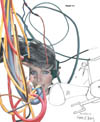 Three of the most well-known and talented musicians in modernelectronic music reunite to follow up their 1999 release 'The MagicSound of...'. Their newest collaborative effort once again allows thetrio to exhibit their respective distinct styles in a way that is bothamazingly well balanced and beautifully matched. The playfulness andhumor found in both Rehberg and O'Rourke's work is evident, and whencombined with Fennesz' skillful subtlety, create an uncanny convulsivebeauty. The four pieces on 'The Return of...' total just over 40minutes. The first two, "Floating My Boat" and "A Viennese Tragedy"exemplify the all-over decoupage nature of the album. A collage oftwitters and low tones are enmeshed in orchestral touches, which lend aquirky and charmingly outmoded element to the digital noises. "FloatingMy Boat" is a marriage of the slow and the frantic, while theaptly-titled "A Viennese Tragedy" has something melancholic in itsinsectival chirping, metallic and aerial blares, and sublime patches.Also prevalent on this track is a heavy use of organic sounds, and theassembly of all these elements gives the sensation of an adroitlycontrolled chaos, which continues into the third piece, "Riding Again".Along with the final track, "We Will Diffuse You", the album evolvesinto an understated ocean of drones, interspersed by occassionaltwitchy bursts. The album's impishly abrupt ending is also strangelysuitable. 'The Return of Fenn O'Berg', with the charactistic warmth andaccessibility of its collaborators is a welcome one amongst the all-toofrequent distant and overly academic leanings of some artists in therealm of the laptop. Thankfully, some of the most gifted in themicrosound genre have decided to venture outside the ivory tower.
Three of the most well-known and talented musicians in modernelectronic music reunite to follow up their 1999 release 'The MagicSound of...'. Their newest collaborative effort once again allows thetrio to exhibit their respective distinct styles in a way that is bothamazingly well balanced and beautifully matched. The playfulness andhumor found in both Rehberg and O'Rourke's work is evident, and whencombined with Fennesz' skillful subtlety, create an uncanny convulsivebeauty. The four pieces on 'The Return of...' total just over 40minutes. The first two, "Floating My Boat" and "A Viennese Tragedy"exemplify the all-over decoupage nature of the album. A collage oftwitters and low tones are enmeshed in orchestral touches, which lend aquirky and charmingly outmoded element to the digital noises. "FloatingMy Boat" is a marriage of the slow and the frantic, while theaptly-titled "A Viennese Tragedy" has something melancholic in itsinsectival chirping, metallic and aerial blares, and sublime patches.Also prevalent on this track is a heavy use of organic sounds, and theassembly of all these elements gives the sensation of an adroitlycontrolled chaos, which continues into the third piece, "Riding Again".Along with the final track, "We Will Diffuse You", the album evolvesinto an understated ocean of drones, interspersed by occassionaltwitchy bursts. The album's impishly abrupt ending is also strangelysuitable. 'The Return of Fenn O'Berg', with the charactistic warmth andaccessibility of its collaborators is a welcome one amongst the all-toofrequent distant and overly academic leanings of some artists in therealm of the laptop. Thankfully, some of the most gifted in themicrosound genre have decided to venture outside the ivory tower.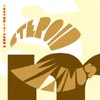 Jim Thirwell's third album under the guise of Steroid Maximus is anepic, cinematic vacation from the razor-gargled industrial pound ofFoetus. The underlying thread of irreverent and sophisticated humor(throughout all of Thirwell's work) is immediately apparent in thealbum title's play against the Futurist (utopian) cover art. Ectopiameans "a morbid displacement of parts." Unsurprisingly, this mostlyinstrumental album splices a multitude of parts: unlikely genres,samples and sounds into a compelling collage. Various parts includestrains of horror strings, sci-fi theremin wailing, jazzy synths, 70'scop-chase rhythm piano, funk drums, whimsical toy whistles, ecstaticswing band crescendos, mournful operatic vocalizations, hawaiiansunrise, gypsy music, and even a straight-up sample of James Bondsuspense-moment near the end, just to name a few. One of my favoriteparts of the disc is "WM ," where a couple of shortwave radio samplesform a bouncy passage over tribal drums and xylophones. Thirwellclearly maintains his proclivity for cartoonish dynamism (he did abang-up cover of the classic Raymond Scott tune "Powerhouse" on 1992's'Gondwanaland'), as the pace rollercoasters throughout the disc's 52minutes. It's an energizing listen, and reminded me at times of IgorWakhevitch , or the soundtrack work of Goblin ('Suspiria', 'Dawn of theDead', etc) and Alain Goraguer ('Fantastic Planet'), with big bandsplash and modern synth lines. Someone needs to hurry up and hire thisguy to start scoring films—or maybe start making movies to go alongwith these soundtracks.
Jim Thirwell's third album under the guise of Steroid Maximus is anepic, cinematic vacation from the razor-gargled industrial pound ofFoetus. The underlying thread of irreverent and sophisticated humor(throughout all of Thirwell's work) is immediately apparent in thealbum title's play against the Futurist (utopian) cover art. Ectopiameans "a morbid displacement of parts." Unsurprisingly, this mostlyinstrumental album splices a multitude of parts: unlikely genres,samples and sounds into a compelling collage. Various parts includestrains of horror strings, sci-fi theremin wailing, jazzy synths, 70'scop-chase rhythm piano, funk drums, whimsical toy whistles, ecstaticswing band crescendos, mournful operatic vocalizations, hawaiiansunrise, gypsy music, and even a straight-up sample of James Bondsuspense-moment near the end, just to name a few. One of my favoriteparts of the disc is "WM ," where a couple of shortwave radio samplesform a bouncy passage over tribal drums and xylophones. Thirwellclearly maintains his proclivity for cartoonish dynamism (he did abang-up cover of the classic Raymond Scott tune "Powerhouse" on 1992's'Gondwanaland'), as the pace rollercoasters throughout the disc's 52minutes. It's an energizing listen, and reminded me at times of IgorWakhevitch , or the soundtrack work of Goblin ('Suspiria', 'Dawn of theDead', etc) and Alain Goraguer ('Fantastic Planet'), with big bandsplash and modern synth lines. Someone needs to hurry up and hire thisguy to start scoring films—or maybe start making movies to go alongwith these soundtracks. 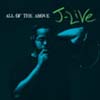 This second full-length album from New York City's J-Live showcases an increasingly popular brand of hip-hop music: competent, decidedly independent and exciting like a standardized test. I picked up this album because it was touted as an Independent (with a capital "I") parallel to early De La Soul albums and I had heard some of his early tracks which were enjoyable and promising.
This second full-length album from New York City's J-Live showcases an increasingly popular brand of hip-hop music: competent, decidedly independent and exciting like a standardized test. I picked up this album because it was touted as an Independent (with a capital "I") parallel to early De La Soul albums and I had heard some of his early tracks which were enjoyable and promising.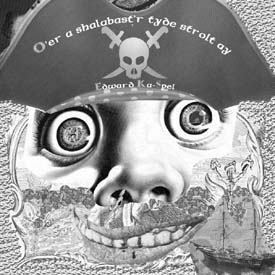 Sometimes I wonder when this market overflow of LPD and EKS materialwill lighten up and allow for the fans to catch up. Unfortunately whenthere's scarecely limited releases that spring up terribly often, thisis becoming an increasingly difficult task. Does the words "economicrecession" mean anything to psychotic record pimps like Chris McBeth?Limited to 600 copies, this super-thick LP is described as continuingwhat was introduced on the CD issued last year on World Serpent byKa-Spel, 'Cast O'Grey Skreens.' While the LP is broken up into oneside-long track on side A and two on side B, I personally feel themusic echoes an older style of solo EKS recordings, with whimsicalcalliope-esque music, loops and gorgeous drones, rather than thesomewhat recent trend: a hodgepodge of almost sketchwork-like songsstrewn together as one super-lengthy track. "An Ill Wind" opens with adull roar, builds, then quiets down to a tinkling piano melody, prettyenough to can give any old-school fan goose-bumps. What followsincludes more shimmery instruments swaying along with Edward's vocalpleadings for a miracle. Then comes the unavoidable build-up and returnto the quiet melody again, this time with more haunting coloration andblurring. Side B begins with the 11+ minute "O'Reilly's Comet," with adriving looped pulse which has almost become a signature rhythm for themore experimental loops the Dots are prone to. There are a few momentswhere it picks up to an excited pace, but the 4/4 clanging onpercussive sound effects becomes somewhat monotonous for the duration.Almost predictably, the monotony is overtaken by sheer beauty in the11+ minute closer, "Safer than the Open," where drones of reverberatedvoices are layered with arrhythmic sound effects which give way to athundering few beats, a drop, and a fantastic return with some trulystunning string sounds. If form is more important than function, actquick on this release, as the deluxe package includes loads of goodies,but it might be worthwhile to wait for a forthcoming CD release whichwill hopefully include the tracks from the limited accompanying 7"record and that 10" out last year. Come on, Chris, didn't your mom everteach you to share?
Sometimes I wonder when this market overflow of LPD and EKS materialwill lighten up and allow for the fans to catch up. Unfortunately whenthere's scarecely limited releases that spring up terribly often, thisis becoming an increasingly difficult task. Does the words "economicrecession" mean anything to psychotic record pimps like Chris McBeth?Limited to 600 copies, this super-thick LP is described as continuingwhat was introduced on the CD issued last year on World Serpent byKa-Spel, 'Cast O'Grey Skreens.' While the LP is broken up into oneside-long track on side A and two on side B, I personally feel themusic echoes an older style of solo EKS recordings, with whimsicalcalliope-esque music, loops and gorgeous drones, rather than thesomewhat recent trend: a hodgepodge of almost sketchwork-like songsstrewn together as one super-lengthy track. "An Ill Wind" opens with adull roar, builds, then quiets down to a tinkling piano melody, prettyenough to can give any old-school fan goose-bumps. What followsincludes more shimmery instruments swaying along with Edward's vocalpleadings for a miracle. Then comes the unavoidable build-up and returnto the quiet melody again, this time with more haunting coloration andblurring. Side B begins with the 11+ minute "O'Reilly's Comet," with adriving looped pulse which has almost become a signature rhythm for themore experimental loops the Dots are prone to. There are a few momentswhere it picks up to an excited pace, but the 4/4 clanging onpercussive sound effects becomes somewhat monotonous for the duration.Almost predictably, the monotony is overtaken by sheer beauty in the11+ minute closer, "Safer than the Open," where drones of reverberatedvoices are layered with arrhythmic sound effects which give way to athundering few beats, a drop, and a fantastic return with some trulystunning string sounds. If form is more important than function, actquick on this release, as the deluxe package includes loads of goodies,but it might be worthwhile to wait for a forthcoming CD release whichwill hopefully include the tracks from the limited accompanying 7"record and that 10" out last year. Come on, Chris, didn't your mom everteach you to share?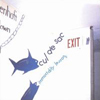 For all intents and purposes, this should have been a horrible mess.The liner notes, written by Cul De Sac muli-instrumentalist GlennJones, outline the tragedy that should have been quite clearly: theband shows up to do a live radio performance at Brandeis University andsuffer circumstances of Spinal Tap-ian proportions. There was verylittle space for the band to perform, they would not be able to see orhear the DJ during the production, and they had little time to soundcheck and would not be able to test their levels before the actualbroadcast began. Again, this should have guaranteed a horriblerecording. Instead, listening to it later, the band realized it was oneof their best live performances, and certainly worthy of release to afanbase rabid for new material. Having never heard Cul De Sac live, buthaving heard their records, it's also one of their best commitments totape. Sure it's sloppy in areas, as live performance can be, andseveral of the tracks go on much too long; but the band plays outadmirably, vibrantly, and without compromise. After all, they thoughtthis would be horrible from the outset. So they pull out the stops andlet loose with a series of tracks that suck you in and drone you out.There are moments of pure melodic beauty on 'Frozen in Fury on the Roofof the World,' dischordant beeps and steady rhythms meeting on thetitle track, the near-hypnotic shuffle of 'Flying Music from Faust,'and slow, deliberate marches to close the disc on 'Blue in E.' The bandruns the gamut, and they're better having survived it. Ultimately, withtwo albums in the works—a soundtrack and a studio album of original newmaterial - these recordings show promise for the direction Cul De Sacis headed towards, as well as serving as the best representation, bytheir own admission, of what the band is about. Sometimes it's prettysurprising what glory can be gained out of utter despair.
For all intents and purposes, this should have been a horrible mess.The liner notes, written by Cul De Sac muli-instrumentalist GlennJones, outline the tragedy that should have been quite clearly: theband shows up to do a live radio performance at Brandeis University andsuffer circumstances of Spinal Tap-ian proportions. There was verylittle space for the band to perform, they would not be able to see orhear the DJ during the production, and they had little time to soundcheck and would not be able to test their levels before the actualbroadcast began. Again, this should have guaranteed a horriblerecording. Instead, listening to it later, the band realized it was oneof their best live performances, and certainly worthy of release to afanbase rabid for new material. Having never heard Cul De Sac live, buthaving heard their records, it's also one of their best commitments totape. Sure it's sloppy in areas, as live performance can be, andseveral of the tracks go on much too long; but the band plays outadmirably, vibrantly, and without compromise. After all, they thoughtthis would be horrible from the outset. So they pull out the stops andlet loose with a series of tracks that suck you in and drone you out.There are moments of pure melodic beauty on 'Frozen in Fury on the Roofof the World,' dischordant beeps and steady rhythms meeting on thetitle track, the near-hypnotic shuffle of 'Flying Music from Faust,'and slow, deliberate marches to close the disc on 'Blue in E.' The bandruns the gamut, and they're better having survived it. Ultimately, withtwo albums in the works—a soundtrack and a studio album of original newmaterial - these recordings show promise for the direction Cul De Sacis headed towards, as well as serving as the best representation, bytheir own admission, of what the band is about. Sometimes it's prettysurprising what glory can be gained out of utter despair.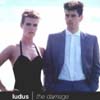 Part of the late 70s Manchester scene made popularly acceptable by the'24 Hour Party People' film, Ludus are now given the re-issuecompilation treatment. It's long overdue really, as the majority oftheir material was never given a full CD issue. With digitallyremastered material and over 70 minutes of music, this claims to be the'definitive Ludus compilation'. The truly inventive mix of free-jazz,feminist lyrics, experimentalism and playfulness is a littledisconcerting at first, but the sheer funkiness and playful energystick out a mile. The complex jazz structures and sax skronking add tothe fun, and to top it all, Linder Sterling's stunning, commandingvoice. All the tracks are propelled along with this weird awkwardenergy, jumping between ideas, catching you off guard. Some are justminute long blasts of sax and drums, some could have been pop classics,in the right hands. The only complaint is the decision to put on somelive recordings from a Hacienda performance when studio versions exist,but they are well-recorded and capture some of the audience's awe andnervous fright (Linder has been known to perform in clothes made out ofraw meat..) Most of the tracks, like the highlight 'I Can't Swim I HaveNightmares' have enough hooks and twists for a whole album, and jumparound from groove to groove so fast, that trying to dance to themwould be a safety hazard. Endlessly clever, funky, scary andindividual, this is one of the gems of the Manchester scene.
Part of the late 70s Manchester scene made popularly acceptable by the'24 Hour Party People' film, Ludus are now given the re-issuecompilation treatment. It's long overdue really, as the majority oftheir material was never given a full CD issue. With digitallyremastered material and over 70 minutes of music, this claims to be the'definitive Ludus compilation'. The truly inventive mix of free-jazz,feminist lyrics, experimentalism and playfulness is a littledisconcerting at first, but the sheer funkiness and playful energystick out a mile. The complex jazz structures and sax skronking add tothe fun, and to top it all, Linder Sterling's stunning, commandingvoice. All the tracks are propelled along with this weird awkwardenergy, jumping between ideas, catching you off guard. Some are justminute long blasts of sax and drums, some could have been pop classics,in the right hands. The only complaint is the decision to put on somelive recordings from a Hacienda performance when studio versions exist,but they are well-recorded and capture some of the audience's awe andnervous fright (Linder has been known to perform in clothes made out ofraw meat..) Most of the tracks, like the highlight 'I Can't Swim I HaveNightmares' have enough hooks and twists for a whole album, and jumparound from groove to groove so fast, that trying to dance to themwould be a safety hazard. Endlessly clever, funky, scary andindividual, this is one of the gems of the Manchester scene. Mary Timony's second solo effort finds her exploring similar themeswith slightly different sonic partners. Last time it was John McEntireand Bob Weston adding elements here and there, but this time it'sgeniuses of the moment Alan Weatherhead and Mark Linkous ofSparklehorse fame. New textures aside, it's still primarily Timony andChristina Files, though, with the power behind this music, and that'sall it really needs. The themes are very much the same as last time,the lyrics just as affecting. Timony's songs are very occupied with thespirits of the earth, animals, and love and wanting. But they're likemusical fables, with vivid characters in different costumes, like theworks of Edgar Allan Poe set to music. It's all pageantry of sorts, andit's very well executed on "The Golden Dove", more so than in the past.'Dr. Cat' is playful in the beginning and haunting in it's dyingmoments, 'The Owl's Escape' makes the hairs on your neck stand on end,and 'Ant's Dance' is all power and drive, with fantastic sounds andnoises emanating from the speakers (the horns are just plain lovely!).Ultimately, the image of the dove is important as the love that lefther for California, but also as the center image of 'Magic Power': "heyho, how do you go?/how do you get through forty blows?/hey ho, how doyou love/how do you love a dead dove?' The last two tracks leftsomething to be desired, as they served to annoy with the trite imageryon 'Dryad and the Mule' accompanying whistling and handclaps, and thesometimes dischordant mess of 'Ash and Alice' ultimately serving littlepurpose. The 'hidden' track - listed in the liner notes, butapproximately 2 minutes 'Ash and Alice' fades - is a lovely rendition,apparently, of a poem by Henry Lawes and Dr. Henry Hughes. It's afitting end to this album's worth of emotional outpouring, as Timonyseems to ask for requital of her love. An effort like this is certainlyworthy of at least a little praise.
Mary Timony's second solo effort finds her exploring similar themeswith slightly different sonic partners. Last time it was John McEntireand Bob Weston adding elements here and there, but this time it'sgeniuses of the moment Alan Weatherhead and Mark Linkous ofSparklehorse fame. New textures aside, it's still primarily Timony andChristina Files, though, with the power behind this music, and that'sall it really needs. The themes are very much the same as last time,the lyrics just as affecting. Timony's songs are very occupied with thespirits of the earth, animals, and love and wanting. But they're likemusical fables, with vivid characters in different costumes, like theworks of Edgar Allan Poe set to music. It's all pageantry of sorts, andit's very well executed on "The Golden Dove", more so than in the past.'Dr. Cat' is playful in the beginning and haunting in it's dyingmoments, 'The Owl's Escape' makes the hairs on your neck stand on end,and 'Ant's Dance' is all power and drive, with fantastic sounds andnoises emanating from the speakers (the horns are just plain lovely!).Ultimately, the image of the dove is important as the love that lefther for California, but also as the center image of 'Magic Power': "heyho, how do you go?/how do you get through forty blows?/hey ho, how doyou love/how do you love a dead dove?' The last two tracks leftsomething to be desired, as they served to annoy with the trite imageryon 'Dryad and the Mule' accompanying whistling and handclaps, and thesometimes dischordant mess of 'Ash and Alice' ultimately serving littlepurpose. The 'hidden' track - listed in the liner notes, butapproximately 2 minutes 'Ash and Alice' fades - is a lovely rendition,apparently, of a poem by Henry Lawes and Dr. Henry Hughes. It's afitting end to this album's worth of emotional outpouring, as Timonyseems to ask for requital of her love. An effort like this is certainlyworthy of at least a little praise. I bought this because I loved the "Shitfuckers!" EP (which I admittedlybought just for the name), and also because the description on theSoleilmoon website convinced me that I could not go wrong. They wereright: once you've been hooked by Aaron Funk's madness, there's nogoing back. From the opening kitschy vibe this album just makes youlaugh. And how could you not, with a Julie Andrews-type crooning in"Dance Like You're Selling Nails" over Funk's freakshow drum'n'bassdemolition? Or the high-speed jazzy meanderings in "Banana Seat Girl"that sounds like a cross between Squarepusher and repeatedlyfast-forwarding and rewinding a DAT tape while it's in play mode? Youknow, where you hear clear bits of the music on the tape, but whicheludes you before it whizzes by. One of the highlights of the album iscertainly "Make Ronnie Rocket", which starts modestly enough withinterspersed dubby MC samples over Funk's characteristic bombasticdrum'n'bass beats. But a minute or so into the track, all hell breaksloose as you're given a spoonful of C4 and forced to watch from theinside while your head explodes. This is not music to tap your foot to,or shake your ass to while you try to pick up chicks at the club. It'snot exactly arrhythmic. It's not exactly asymmetrical. It's not exactlymath-geek music. If you just sit and listen to it, preferably withheadphones or loudly in the car while driving down the freeway, it'sperfectly acceptable to just try to follow the grooves and beats withyour mind. More than likely you'll just find yourself chuckling as Mr.Funk throws another curve. Some of the changes are just plainridiculous. Take "Deadman DJ" for example. Once again the dub MCreturns, his one-liner minced and butchered along with the freneticbeats. Midway through the song, it sounds like it's over, but it picksback up with the MC repeating "Deadman DJ" while a sound like theannoying high-pitched whistle sound that you hear in a lot ofmodern-day slow "rap" music whirs in the background. You know what I'mtalking about. So now you've got a rasta MC backed by cheesy rap noisesand absolutely breakneck d-n-b. How can you not laugh out loud? Youmight not even notice it if you weren't listening attentively. I findthat half the fun is trying to figure out what Funk's sound sourceswere, and just what the fuck he was thinking (I like to imagine that helaughs out loud a lot while he composes). Or better yet, try thinkingas you listen about how you would make this music if it were up to you?The beautiful thing about Venetian Snares is that this is truly musicfor the moment.
I bought this because I loved the "Shitfuckers!" EP (which I admittedlybought just for the name), and also because the description on theSoleilmoon website convinced me that I could not go wrong. They wereright: once you've been hooked by Aaron Funk's madness, there's nogoing back. From the opening kitschy vibe this album just makes youlaugh. And how could you not, with a Julie Andrews-type crooning in"Dance Like You're Selling Nails" over Funk's freakshow drum'n'bassdemolition? Or the high-speed jazzy meanderings in "Banana Seat Girl"that sounds like a cross between Squarepusher and repeatedlyfast-forwarding and rewinding a DAT tape while it's in play mode? Youknow, where you hear clear bits of the music on the tape, but whicheludes you before it whizzes by. One of the highlights of the album iscertainly "Make Ronnie Rocket", which starts modestly enough withinterspersed dubby MC samples over Funk's characteristic bombasticdrum'n'bass beats. But a minute or so into the track, all hell breaksloose as you're given a spoonful of C4 and forced to watch from theinside while your head explodes. This is not music to tap your foot to,or shake your ass to while you try to pick up chicks at the club. It'snot exactly arrhythmic. It's not exactly asymmetrical. It's not exactlymath-geek music. If you just sit and listen to it, preferably withheadphones or loudly in the car while driving down the freeway, it'sperfectly acceptable to just try to follow the grooves and beats withyour mind. More than likely you'll just find yourself chuckling as Mr.Funk throws another curve. Some of the changes are just plainridiculous. Take "Deadman DJ" for example. Once again the dub MCreturns, his one-liner minced and butchered along with the freneticbeats. Midway through the song, it sounds like it's over, but it picksback up with the MC repeating "Deadman DJ" while a sound like theannoying high-pitched whistle sound that you hear in a lot ofmodern-day slow "rap" music whirs in the background. You know what I'mtalking about. So now you've got a rasta MC backed by cheesy rap noisesand absolutely breakneck d-n-b. How can you not laugh out loud? Youmight not even notice it if you weren't listening attentively. I findthat half the fun is trying to figure out what Funk's sound sourceswere, and just what the fuck he was thinking (I like to imagine that helaughs out loud a lot while he composes). Or better yet, try thinkingas you listen about how you would make this music if it were up to you?The beautiful thing about Venetian Snares is that this is truly musicfor the moment.
